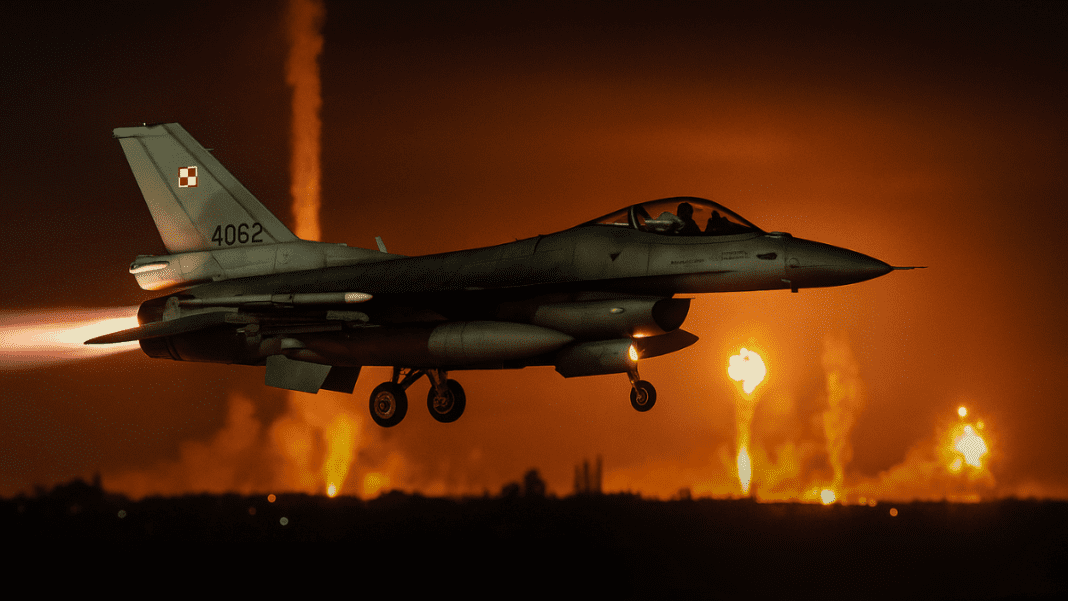In one of the most intense aerial assaults seen in recent months, Russia launched a record-breaking attack on Ukraine during the night, using hundreds of drones and powerful missiles. This massive offensive set off alarms in neighboring NATO countries, especially Poland, which shares a border with Ukraine.
Unprecedented Nighttime Strikes Near NATO Territory
According to Ukraine’s air force, Russia launched a massive overnight assault. The attack included a staggering total of 728 drones. In addition to the drones, Russia also fired six Kinzhal hypersonic ballistic missiles. They further launched seven cruise missiles at various locations across Ukraine. Ukrainian authorities confirmed that the drones included more than 300 Iranian-made Shahed drones. These drones were used in swarm-like formations to overwhelm Ukraine’s air defense systems.
The Ukrainian military responded swiftly, shooting down most of the drones and missiles before they could hit their targets. President Volodymyr Zelensky stated that this was the “highest number of aerial targets in a single day.”
Despite intercepting many aerial threats, damage was still reported across Ukraine. Russian forces targeted major cities including Kyiv, Dnipro, Kharkiv, and Mykolaiv. Strikes also hit regions in the northeast, center, and south. In the northwest, Lutsk near the Polish and Belarusian border was heavily attacked, along with Khmelnytskyi in the west.
Red Line Crossed: NATO Bases Now Just Miles from Russia’s Border — Kremlin Issues Stark Warning
The scale and direction of the attacks raised serious concerns in the region. Many of the airstrikes occurred close to NATO’s eastern borders, prompting immediate military action from the alliance.
Poland Responds with Maximum Readiness
Following the airstrikes, Poland’s Operational Command confirmed it had scrambled fighter jets overnight. The country also raised the alert level of its air defense systems and radar stations to the highest state of readiness. Officials emphasized that these measures were necessary to ensure the security of areas bordering the attack zones.
A social media post by the Polish military stated that the country is “fully ready for immediate response.” Although the drones and missiles did not enter NATO airspace, their proximity to the alliance’s territory triggered strong defensive actions.
This is not the first time NATO members have responded to such threats. Earlier this month, Romania, another NATO country bordering Ukraine, scrambled its fighter jets due to drone activity near its border. These frequent incidents continue to test the readiness of NATO forces.
Zelenskyy Warns US Support Is Key to Stopping Russia’s NATO Aggression
NATO’s founding agreement, particularly Article 5, obligates all member nations to support one another if any country faces an attack. However, no NATO member has officially recognized any drone or missile as having violated its airspace in a way that would trigger a full alliance response.
Even though Russia has not directly attacked NATO countries, the alliance views the sheer volume and scale of Russian strikes near its borders as a warning sign. It continues to keep regional militaries on high alert.
Heavy Damage Reported Across Ukraine Despite Vigilance from NATO Forces
While Ukrainian air defenses performed impressively during the assault, some drones and missiles did break through, causing damage in multiple cities.
In Lutsk, located near the border with Poland and Belarus, strikes caused significant concern due to its proximity to NATO territory.
Khmelnytskyi, another western city, was also a target of the missile and drone barrage.
Major cities like Kyiv, Dnipro, Kharkiv, and Mykolaiv experienced various levels of destruction.
The attack occurred during a time when international efforts are being made to negotiate peace and push for a ceasefire. Despite these efforts, Russia launched one of its largest air campaigns yet, according to Ukrainian officials.
Kremlin crisis deepens—but Russia has firepower to prolong war, says NATO
Colonel Yuriy Ignat, spokesperson for Ukraine’s air force, described the overnight assault as highly aggressive and detailed the use of Iranian-manufactured Shahed drones in the attack. Their long range and low cost make these drones a favored tool in Russia’s aerial strategy.
President Zelensky commented on the situation, saying, “This attack tells a clear story—it comes at a time when many have made efforts to achieve peace and establish a ceasefire, but Russia continues to reject them all.”
Despite the intensity of the assault, Ukraine’s coordinated air defense—supported by radar systems, interceptor drones, and surface-to-air missiles—was largely successful in preventing a more devastating outcome.
